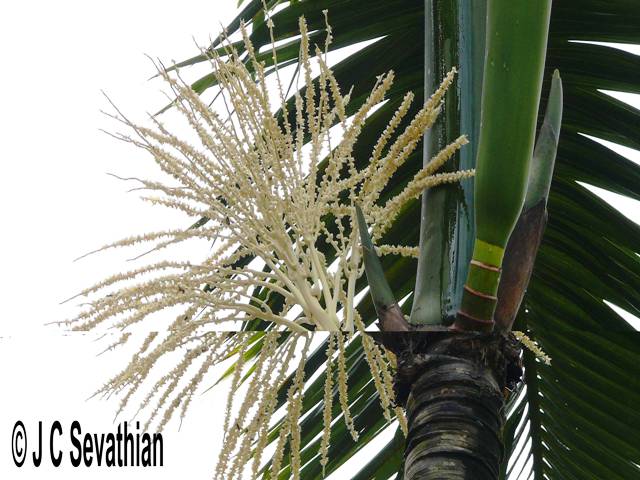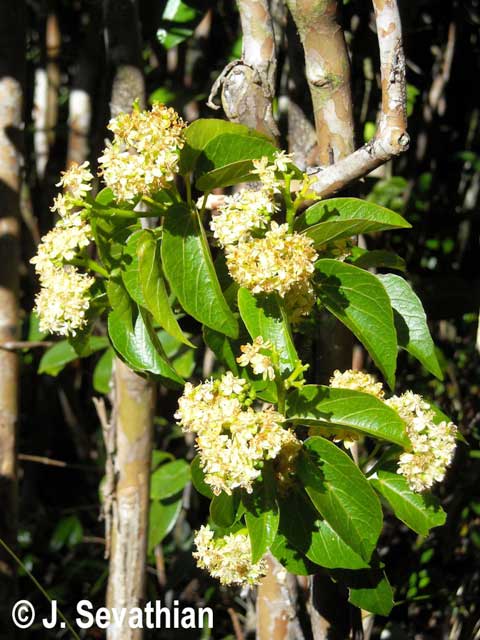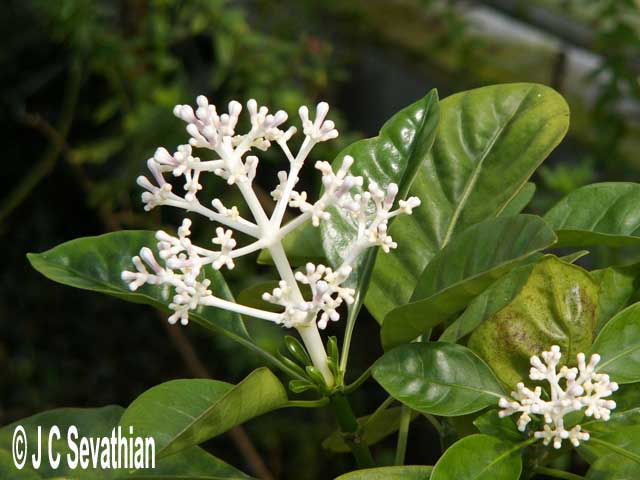
Hyophorbe amaricaulis
|
| |

Syzygium mauritianum
|
| |

Dombeya sevathianii
|
| |

Chassalia boryana
|
| |
| |
| |
| |
|
The island has experienced four centuries of large-scale forest clearance for agriculture and urban development, and when combined with the introduction of invasive species of plants and animals, this has had a disastrous effect on native flora. Some endemic plants such as the palm Hyophorbe amaricaulis have been reduced to just one individual in the wild.
Work continues with the core elements of the project, which are rare plant monitoring and search, and managing the field gene bank. The data from rare plant monitoring is used to update the IUCN Red List for plants and the field work allows plants to be collected for the Mauritius Herbarium.
In an attempt to save not only species but also the genetic diversity of the rarest plant species, a field gene bank was set up in the uplands in the year 2000. It is a collaborative project between the National Parks and Conservation Service (NPCS) and MWF. This project aims to capture the genetic diversity of rare species by taking cuttings or seeds from each known wild individual, and developing a duplicate collection in a protected environment. After an initial plant survey of the location, plant materials are taken (cuttings, seeds, seedlings) to propagate in the Pigeon Wood nurseries at Plaine Paul in Black River Gorges National Park (upland plants). Some of the successfully propagated individuals from Pigeon Wood are distributed to the NPCS and Forestry Service.
The remainder are planted in the field gene bank, a plot of forest in Pigeon Wood. Plants in the gene bank are monitored and regular maintenance weeding is carried out in collaboration with the NPCS. These plants will be propagated on a larger scale in different nurseries for future restoration projects. During 2009/10, some 15 species have been propagated with 13 successes and 64 upland plant individuals were planted in the Pigeon Wood field gene bank.
We have also established a field gene bank on Ile aux Aigrettes for lowland plants. Of the 23 species of rare plants that were propagated in 2010, 21 were successful. Planting is usually done during the rainy season, from January to April, and takes place all around the island, in clusters. Each plant is guarded with large pieces of coral to protect them from trampling by giant tortoises. The plants are then given aunique code, tagged and regularly monitored. During 2009/10, over 1,300 individuals of 21 Critically Endangered species were raised, of which 782 were planted on the island.
As part of the rare plant searches that we carry out, we recently located a number of individuals of a very rare plant, Chassalia boryana, an upland species, which was previously known from only a single wild individual in Mondrain Nature Reserve. Our team located a population of 12 individuals in Chamarel Forest and 2 individuals on Mont sur Mont. All these newly found individuals were relatively young with limited material for collection. We advised on restoration of the sites, which has been implemented with the collaboration of the private sector, and the plants are now being closely monitored.
|
|